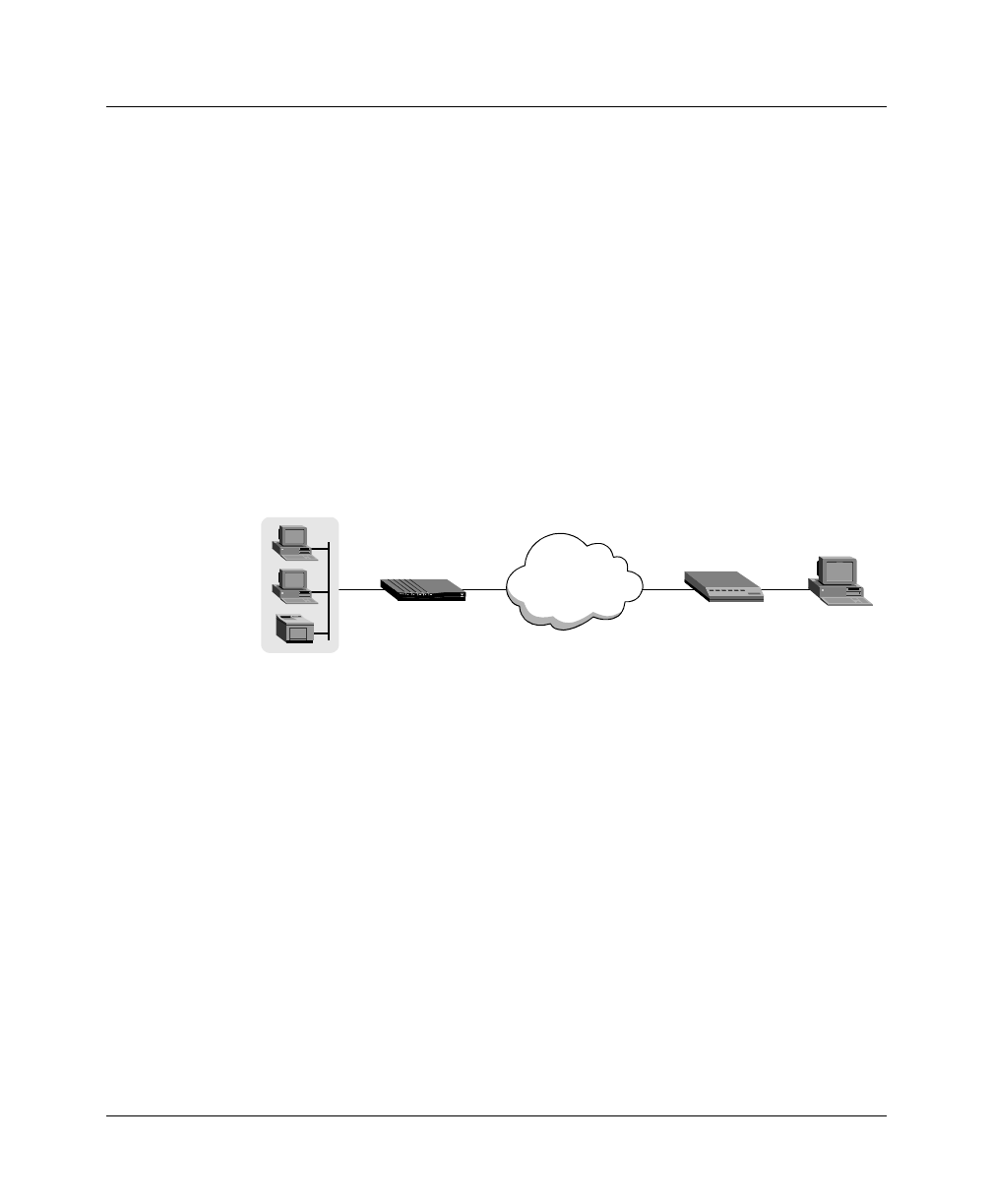User`s guide
Table Of Contents
- Ascend Customer Service
- How to use this guide
- What you should know
- Documentation conventions
- How to use the on-board software
- Manual set
- Configuring WAN Connections
- Configuring IP Routing
- Introduction to IP routing on the Pipeline
- Managing the routing table
- Parameters that affect the routing table
- Static and dynamic routes
- Configuring static routes
- Specifying default routes on a per-user basis
- Enabling the Pipeline to use dynamic routing
- Route preferences
- Viewing the routing table
- Fields in the routing table
- Removing down routes to a host
- Identifying Temporary routes in the routing table
- Configuring IP routing connections
- Ascend Tunnel Management Protocol (ATMP)
- IP Address Management
- Connecting to a local IP network
- BOOTP Relay
- DHCP services
- Dial-in user DNS server assignments
- Local DNS host address table
- Network Address Translation (NAT) for a LAN
- Configuring IPX Routing
- How the Pipeline performs IPX routing
- Adding the Pipeline to the local IPX network
- Working with the RIP and SAP tables
- Configuring IPX routing connections
- Configuring the Pipeline as a Bridge
- Defining Filters and Firewalls
- Setting Up Pipeline Security
- Pipeline System Administration
- Pipeline 75 Voice Features
- IDSL Implementations
- APP Server utility
- About the APP Server utility
- APP Server installation and setup
- Configuring the Pipeline to use the APP server
- Using App Server with Axent SecureNet
- Creating banner text for the password prompt
- Installing and using the UNIX APP Server
- Installing and using the APP Server utility for DO...
- Installing and using the APP Server utility for Wi...
- Installing APP Server on a Macintosh
- Troubleshooting
- Upgrading system software
- What you need to upgrade system software
- Displaying the software load name
- The upgrade procedure
- Untitled

Configuring IPX Routing
Configuring IPX routing connections
4-24 Preliminary January 30, 1998 Pipeline User’s Guide
Configuring IPX routing connections
This section describes how to configure IPX routing connections. It describes
typical host software requirements and includes the following example
configurations:
• Example dial-in client connection
• Example with servers on both sides of the link
• Example with servers on only one side of the link
An example dial-in client connection
In Figure 4-1 a NetWare client dials into a corporate IPX network that supports
both servers and clients using PPP dial-in software.
Figure 4-1. A dial-in client requiring dynamic IPX network assignment
In this example, the Pipeline is connected to a corporate NetWare LAN and the
dial-in client has an ISDN modem, NetWare client software, and PPP dial-up
software. This example assumes that the Answer profile and Ethernet profile
have been set up to enable IPX routing.
To configure the Pipeline to accept a connection from the dial-in user:
1
Open the Ethernet profile.
2
Specify an IPX number for assignment to dial-in clients.
IPX Pool#=B21CC345
Note:
Make sure this number is unique in the entire IPX routing domain.
3
Close the Ethernet profile.
4
Open the Connection profile for the dial-in user and set the following
parameters.
WAN










